The J. Cheney Wells Clock Collection at Old Sturbridge Village
The J. Cheney Wells collection of over 100 early New England clocks is not what one would expect to find when visiting Old Sturbridge Village in Sturbridge, Massachusetts, an early 19th century living museum village that re-creates everyday life in rural New England through the use and display of the tools and technology of the time. Yet these two distinct collections with seemingly little in common are the legacy contributions of two brothers from Southbridge, MA who pursued different passions but shared a vision in the founding of Old Sturbridge Village (OSV).
Joel Cheney Wells (1874-1960) was the younger brother of Albert B. Wells (1872-1953), the collector who spearheaded the museum project in 1936 as a way to give context and renewed purpose to his extensive collection of Americana primitives, at the time housed in a family home turned local history museum in downtown Southbridge. The two worked with their brother, Channing, and their father George W. Wells in the family business, American Optical Corporation. In fact, Cheney is credited with “forty patents and some applications pending relating to improvements in eyeglasses of various types also of bifocal lenses.”

Cheney, as he was known to family and in business, is described as a meticulous man who liked order and had a “flair for tinkering.” “It was the mechanical precision of clocks that appealed to him,” says Thomas Kelleher, Historian and Curator of Mechanical Arts at Old Sturbridge Village, in an attempt to shed light on Cheney Wells’ fascination with early New England clocks. “For Wells, clocks represented the best combination of ingenuity, mechanical ability, and aesthetics found in New England’s early industries.”
Cheney’s acquisition of clocks started in the early 1920s and spanned three decades. His collection reflects an appreciation for tall case clocks, decorative mantle clocks, shelf clocks and “Banjo” wall clocks. It also pays homage to the craftsmanship and aesthetic of such New England clockmakers as the Willards, Joshua Wilder, Caleb Wheaton, Thomas and William Claggett, Samuel and Nathaniel Mulliken, Levi and Abel Hutchins, Nathaniel Munroe, Elnathan Tabor, Eli Terry, Seth Thomas, and Silas Hoadley, among others.
Not all the clocks in the collection are tall case clocks. There are also many fine examples of shelf clocks and wall clocks, including “patent timepieces,” variations on a design by Simon Williard made by him, his relatives, and competitors as more affordable but still attractive alternatives to tall case clocks. “Shelf clocks, many made with cheaper 30-hour movements by Connecticut makers such as Seth Thomas and Eli Terry increasingly transformed clocks from luxuries for the wealthy into a common feature in many households,” shares Kelleher.
Although it took a few decades for Cheney’s clocks to find an appropriate home in the village, the J. Cheney Wells Clock Gallery opened in May 1982 showcasing 114 clocks and five watches. While the collection is predominately Cheney’s, Kelleher shares that the original collection has been refined to focus on clocks pre-1840, and new pieces have been added so the collection can tell the complete story of the “Democratization of Time” in the 19th century. “This is the best collection of early New England clocks, anywhere,” says Kelleher about the collection as it has now been curated and displayed.
While off the beaten path as one heads into the Village, a visit to the Gallery is well worth the time, especially on the hour when the sound of clock chimes remind us of the enduring beauty and precision of these works of art and science.



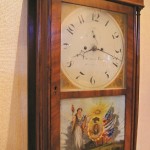
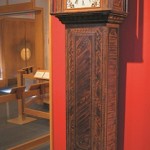

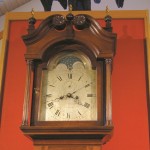
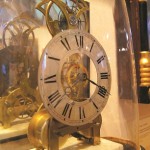
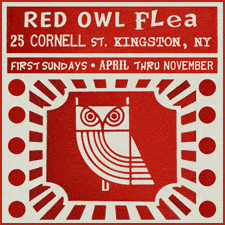


Related posts: